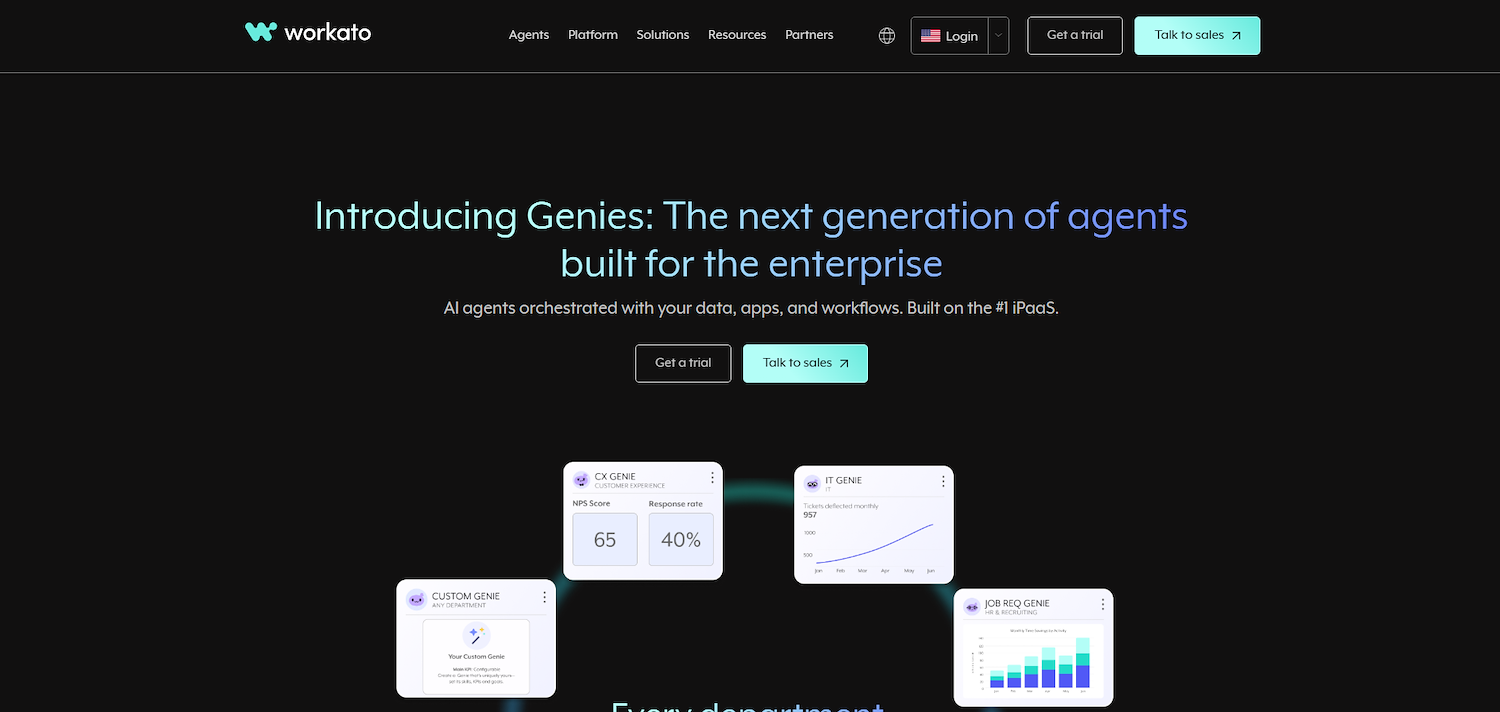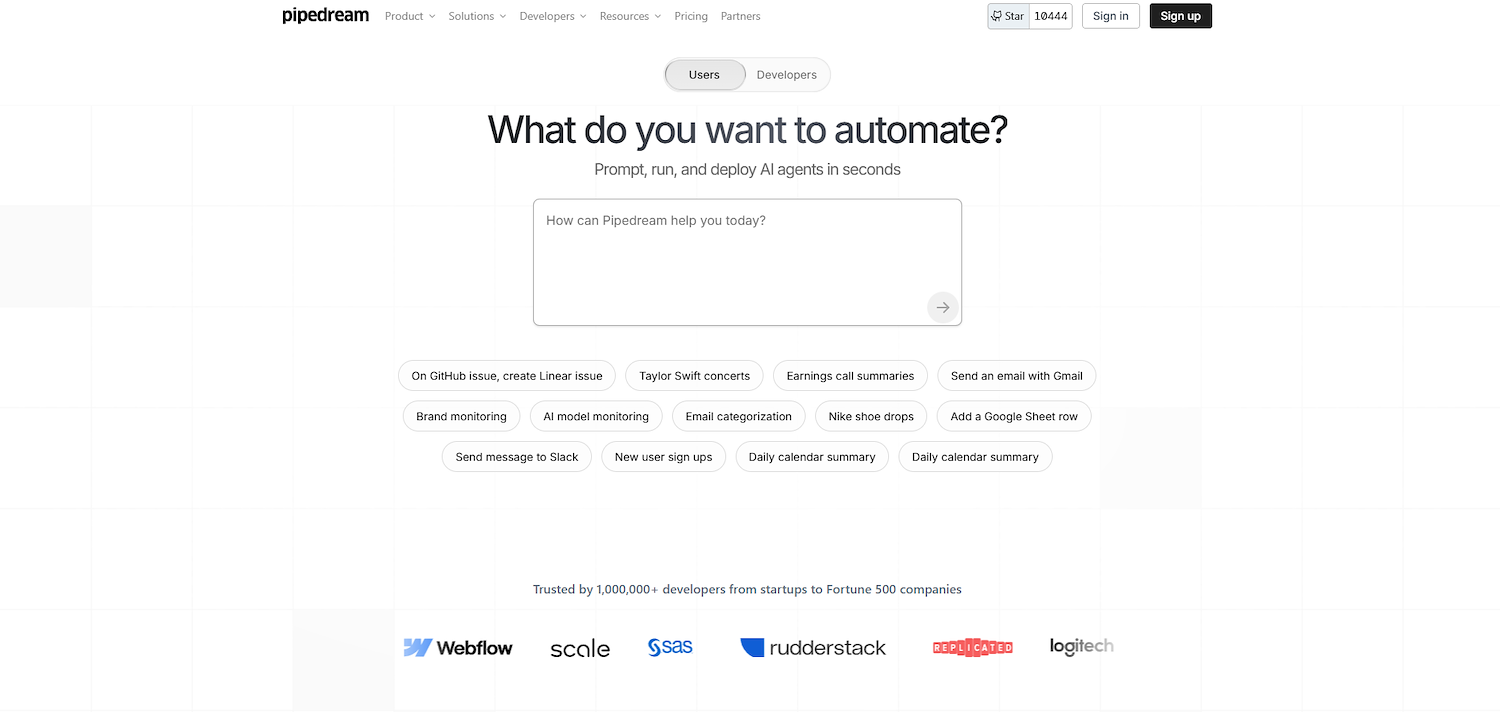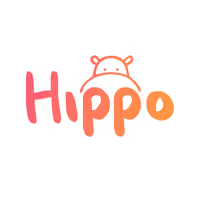Relay Alternatives
Explore 10 alternatives to Relay. This guide compares top business banking platforms to help you choose the best option for your company's finances.

Relay is a great tool for specific needs. It performs well in connecting people with the right first responders for non-emergency concerns, including specialized units like mental health professionals. This makes it a solid choice for targeted, remote communication with community services.
However, some users note that the lack of public pricing and limited reviews can make evaluation difficult. To help, we've analyzed the best alternatives, comparing their advantages and drawbacks to Relay based on G2 reviews to help you create a shortlist. Let's get started.
11x: Digital Workers for Sales Teams
If your sales team explores automation, consider 11x. Its digital workers handle tasks like lead generation and outreach. This frees up your sales representatives to focus on deal closure and client relationships. See how it can fit into your workflow.
11x provides an all-in-one GTM platform where AI agents autonomously run the sales process.
The platform uses two agents. Alice identifies potential customers, handles email and LinkedIn outreach, and maintains the CRM. Julian qualifies inbound interest and schedules meetings.
The platform replaces separate tools for data enrichment, sales outreach, and email warmup. This consolidation of functions eliminates the need for a fragmented GTM stack.
Relay Alternatives
This section examines top Relay alternatives in detail. We analyze each tool's pricing, main features, benefits, and potential drawbacks in comparison to Relay.
1) Zapier
Zapier connects different web applications to automate workflows. It allows users to create automated tasks that run in the background. This tool is designed to link software that does not natively integrate, moving information between them automatically without needing to write code.
While Relay focuses on connecting people with specific community services, Zapier automates processes between software applications. Relay manages human communication workflows, while Zapier handles data and task automation across a tech stack. They serve different business functions.
A potential drawback can be cost, as complex workflows that run frequently may require higher subscription tiers. Also, automations depend on the APIs of connected apps, so an API change might sometimes cause a workflow to need maintenance.
Choose Zapier if your objective is to automate data transfer between various software tools. For the specific task of managing communication with external service providers like mental health units, Relay's focused feature set is more applicable.

Zapier functions as an AI orchestration platform. It connects a network of nearly 8,000 SaaS apps and over 300 AI tools. The platform allows users to build automations without code and acts as a central point for AI workflows, agents, and chatbots to meet business goals.
Its automations apply to many areas, such as IT help desks, lead management, sales operations, and customer support.
Zapier's Main Features
- Builds multi-step automations with a visual interface, logic branches, and built-in AI processing.
- Connects with over 8,000 SaaS apps and more than 300 AI tools, including OpenAI, Anthropic, and Gemini.
- Offers custom autonomous AI agents that work across the app stack and no-code AI chatbots to solve customer problems.
- Stores and manages workflow data in no-code databases and creates drag-and-drop front-end interfaces for any automation.
How Zapier Compares to Relay
Average Review score: 4.5/5 stars w/ 1,368 Reviews based on 1,368 G2 reviews.
- Zapier connects with over 8,000 SaaS applications, a much broader scope of software integration compared to Relay’s focus on human communication services.
- It automates data transfer and tasks between different software tools, whereas Relay manages communication workflows between people and service providers.
- The platform includes a visual flow designer to build multi-step automations, which allows for more complex process design than Relay's specific communication pathways.
- Users can build custom autonomous AI agents that operate across their app stack, a feature for task automation not present in Relay's human-to-human connection model.
Zapier's Limitations Compared to Relay
- Zapier automates software tasks but does not offer a direct communication channel to community services. Relay, in comparison, connects people with specific first responders for non-emergency concerns.
- The platform is not designed for human-to-human communication workflows. For example, it cannot manage dispatch for specialized teams like mental health units, which is a core function in Relay.
- Its focus is on moving data between different applications. This means it lacks the specific features needed to manage targeted, remote communication with external service providers, unlike Relay's dedicated system.
Budget and Pricing Considerations
Zapier offers a free plan and paid tiers starting at $19.99 per month. Relay’s pricing is not publicly available, so a direct cost comparison is not possible without contacting the vendor for a custom quote.
2) Make

Make is a visual platform for automation and integration. Organizations use its drag-and-drop interface to build and manage workflows. The platform connects with over 2,500 apps and 400 AI tools.
Common applications cover sales for lead capture, marketing for social media posts, IT for incident management, and finance for invoice creation.
Make's Main Features
- Offers a visual workflow builder to design and deploy automations using a drag-and-drop canvas.
- Connects with over 2,500 apps and 400 AI tools, including OpenAI, Salesforce, and Google Gemini.
- Includes Make AI Agents for real-time decision-making within automated processes.
- Provides security features such as GDPR and SOC 2 Type II compliance, data encryption, and Single Sign-On (SSO).
How Make Compares to Relay
Average Review score: 4.7/5 stars w/ 241 Reviews based on 241 G2 reviews.
- Make provides a visual flow designer to build custom automations. This differs from Relay, which focuses on connecting people with specific community services through set communication channels.
- It connects with over 2,500 applications and 400 AI tools. This allows for broader software automation than Relay’s specialized human communication network.
- The platform includes advanced routing and orchestration for workflows. For instance, users can split a process into multiple branches, a feature not applicable to Relay's direct person-to-person dispatch.
- This tool offers real-time monitoring of automation scenarios. This gives users detailed logs to track data flow, which is a different function from managing human communication status in Relay.
Make's Limitations Compared to Relay
- Make does not provide a direct communication channel to community services. Relay, in contrast, connects people with specific first responders for non-emergency issues.
- This tool is not built to manage dispatch for specialized teams, such as mental health units. This is a core function within Relay's system for community service communication.
- Its primary function is to move data between different applications. Therefore, it lacks the specific features needed to manage targeted, remote communication with external service providers, a task Relay handles.
Budget and Pricing Considerations
Make offers a free plan and paid tiers starting at $9.00 per month, while Relay’s pricing is available only upon request. For the most accurate and up-to-date pricing information, we recommend visiting Make's official website.
3) Workato

Workato is an enterprise automation platform. It combines AI agents, enterprise search, and iPaaS features in a single product. The platform connects data, applications, and workflows so teams can design and manage automations with its low-code tools.
Common uses include quote-to-cash cycles, incident escalation, and procure-to-pay processes. It supports automation for departments like IT, finance, and sales.
Workato's Main Features
- Features AI agents for IT, sales, and support, an enterprise search function across connected apps, and a studio for building custom agents.
- Includes an enterprise orchestration suite with iPaaS for cloud and on-prem integrations, API management, and data orchestration.
- Provides embedded iPaaS with pre-built, white-labeled integrations for SaaS vendors to use in their products.
- Contains automation accelerators with out-of-the-box recipes for processes like ticket escalation, procure-to-pay, and remote help-desk support.
How Workato Compares to Relay
Average Review score: 4.7/5 stars based on 566 G2 reviews.
- Workato offers an enterprise orchestration suite to connect cloud and on-premise applications. This is different from Relay, which focuses on communication between people and community services.
- The platform provides a full API management suite to build, test, and monitor APIs. Relay lacks this capability because its system is for direct human communication workflows.
- It includes AI agents for departments like IT and sales, along with an enterprise search function. In comparison, Relay connects people to first responders and does not use AI agents for task automation.
- Workato provides an embedded iPaaS solution that allows SaaS vendors to add pre-built integrations into their products. This is a software development tool, whereas Relay is designed to coordinate community service responses.
Workato's Limitations Compared to Relay
- Workato is designed for enterprise-level process automation, not for coordinating human responses. In contrast, Relay specializes in connecting individuals with non-emergency services like mental health professionals.
- The tool does not have a system to dispatch external teams or manage real-time communication. Relay, however, provides a dedicated workflow for these specific community service interactions.
- Some users might find that Workato's feature set is centered on API and data integration. It does not include the specific protocols for direct, remote contact with service providers that Relay offers.
Budget and Pricing Considerations
Workato’s pricing is available by quote, similar to Relay, making a direct comparison difficult. For the most accurate and up-to-date pricing information, we recommend visiting Workato's official website.
4) Tray.io

Tray.io is a low-code automation platform that connects an organization's cloud stack. It allows teams to build integrations and automate processes. Common use cases include workflows for marketing, sales operations, and support, which helps to connect data across different software tools.
Tray.io's Main Features
- Offers a low-code builder to design, test, and deploy generative-AI agents that retain memory and context across multi-step conversations.
- Provides pre-built agent templates for ITSM, knowledge base access, and customer support to auto-resolve tickets or triage issues.
- Includes a low-code visual builder with an AI Palette to prototype AI functions and over 600 connectors for application integration.
- Features Merlin Guardian to safeguard personally identifiable information and sensitive data within AI workflows.
How Tray.io Compares to Relay
Average Review score: 4.5/5 stars based on 156 G2 reviews.
- Tray.io provides generative AI agents to auto-resolve issues like support tickets. This automates tasks, whereas Relay facilitates communication between people and service providers.
- The platform includes a low-code visual builder and over 600 connectors to integrate various applications. In contrast, Relay offers specific communication pathways for community services, not broad software integration.
- This tool offers features for API construction and testing, allowing developers to manage integrations. Relay does not include these functions, as its system focuses on direct human communication workflows.
- It features Merlin Guardian to safeguard sensitive data like personally identifiable information within AI workflows. This is a data-centric security feature, while Relay's system is built for managing communication with external teams.
Tray.io's Limitations Compared to Relay
- Tray.io automates data flow between applications but does not have a dispatch system. Relay, in comparison, is designed to coordinate responses from external community service teams.
- The platform is not built to manage real-time communication with specialized units, such as mental health teams. This function is a core part of Relay's service for non-emergency concerns.
- Its features are for automating software tasks, not for direct human interaction. Relay provides a specific interface for people to connect with service providers, which Tray.io does not offer.
Budget and Pricing Considerations
Tray.io and Relay both provide pricing upon request, making a direct comparison difficult. For the most accurate and up-to-date pricing information, we recommend visiting Tray.io's official website.
5) n8n

n8n is a workflow automation tool that connects applications and services to automate tasks. The platform provides a visual, node-based editor to design workflows. It is available as a cloud service or can be self-hosted for greater data control.
Typical applications include the automation of marketing campaigns or the synchronization of data between a CRM and other tools.
n8n's Main Features
- Combines a visual, node-based editor with code nodes for JavaScript and Python within the same canvas.
- Offers self-hosting via Docker for on-premise or air-gapped deployments, providing full data control.
- Builds multi-step AI agents and connects any LLM, allowing users to chat with their data through various channels.
- Provides a white-label embedding SDK to add automation features inside other SaaS products.
How n8n Compares to Relay
Average Review score: 4.8/5 stars based on 92 G2 reviews.
- n8n offers a self-hosting option via Docker. This gives organizations full control over their data, which is different from Relay's cloud-based system for managing communication.
- The platform combines a visual editor with code nodes for JavaScript and Python. This allows for more technical customization in workflows compared to Relay's predefined communication pathways.
- This tool lets users build multi-step AI agents that connect to any Large Language Model (LLM). In contrast, Relay focuses on connecting people with human responders and does not use AI agents for task automation.
- n8n provides a white-label embedding SDK. This allows developers to add automation features directly into their own SaaS products, a capability not present in Relay's system for external service communication.
N8n's Limitations Compared To Relay
- n8n automates tasks between software but lacks a system for direct human communication. In comparison, Relay provides a dedicated channel to connect people with non-emergency services like mental health units.
- The tool does not include features to manage the dispatch of external teams. Relay, however, is built specifically to coordinate responses from community service providers in real time.
- Its features center on data synchronization and process automation between apps. This means it does not offer a specific interface for individuals to request and manage contact with external service teams, which is Relay's primary function.
Budget and Pricing Considerations
n8n offers paid cloud plans starting at €20.00 per month, providing price transparency that Relay lacks, as its pricing is only available upon request. For the most current details, we recommend visiting n8n's official website.
A Note on 11x for Sales Teams
If your goal is to automate sales functions, 11x provides digital workers for the task. Its agents manage outreach and lead qualification. This can free up your team to concentrate on closing deals and building client relationships. Explore how it can support your sales process.
With 11x, our AI agents run your sales playbook. Alice finds accounts and handles outreach, while Julian qualifies prospects and schedules meetings. The platform replaces multiple GTM tools, so you don't need extra software or hires.
Book a demo to see 11x in action.
6) Pipedream

Pipedream is an integration platform for developers. It connects APIs with code-level control for complex tasks and no-code components for simple ones. Users build event-driven workflows that start from a trigger in one app, like a new payment, and then execute a series of steps.
Common uses include the automation of internal processes and the prototype of new ideas. The platform serves to integrate various applications and services across an organization.
Pipedream's Main Features
- Offers an AI agent builder that lets users prompt, run, edit, and deploy agents.
- Includes a software development kit (SDK) to embed thousands of integrations directly into applications or agents.
- Provides built-in services such as managed queues, data stores, and private networks for rapid workflow creation.
- Adheres to enterprise security standards, including SOC 2 Type II, ISO 27001, and HIPAA compliance.
How Pipedream Compares To Relay
Average Review score: 4.6/5 stars based on 15 G2 reviews.
- Pipedream provides code-level control for developers to build complex workflows. This is different from Relay, which offers set communication paths for non-technical users to connect with service providers.
- The platform includes an AI agent builder to create and deploy automated agents. In comparison, Relay's system facilitates communication between people and human responders, not AI.
- It offers a software development kit (SDK) to embed thousands of integrations directly into other applications. Relay functions as a standalone tool for communication and does not provide an SDK.
- This tool includes built-in services like managed data stores and private networks for faster workflow creation. Relay's features focus on dispatch and communication management rather than data infrastructure.
Pipedream's Limitations Compared To Relay
- Pipedream is a developer-centric platform and does not provide a direct communication link to community services. Relay, by comparison, is designed for anyone to connect with specific first responders for non-emergency issues.
- The tool is not equipped to manage the dispatch of specialized teams, such as mental health units. This is a core function within Relay's system, which some organizations may require for community service communication.
- Its interface and features focus on API integration and code. This means it lacks the specific protocols needed to manage targeted, remote communication with external service providers, a task Relay handles.
Budget and Pricing Considerations
Pipedream and Relay both provide pricing upon request, making a direct comparison difficult. For the most accurate and up-to-date pricing information, we recommend visiting Pipedream's official website.
7) Microsoft Power Automate

Microsoft Power Automate is a low-code platform to automate business processes. It connects applications and services to create workflows for tasks like data collection and file synchronization. Users build these automated processes with drag-and-drop tools and prebuilt connectors.
The platform also offers process mining to find automation opportunities and robotic process automation (RPA) for desktop tasks. It handles use cases from simple notifications to complex business logic.
Microsoft Power Automate's Main Features
- Maps workflows and surfaces optimization opportunities with task and process mining.
- Automates processes across desktop apps, websites, and cloud APIs with AI-powered digital and robotic process automation (RPA).
- Delivers centralized governance, 360-degree monitoring, and elastic scaling through managed environments.
- Leverages AI for natural language flow creation with Copilot and pre-built models for document processing.
How Microsoft Power Automate Compares To Relay
Average Review score: 4.4/5 stars w/ 679 Reviews based on 679 G2 reviews.
- Microsoft Power Automate uses process mining to analyze business workflows and find automation opportunities. This is different from Relay, which focuses on managing specific communication channels rather than analyzing internal processes.
- It provides robotic process automation (RPA) to handle tasks on desktop applications. Relay, by contrast, coordinates human responses and does not automate tasks on a user's computer.
- The platform includes AI features like Copilot, which lets users create automations using natural language. This contrasts with Relay's system, which is designed for direct communication between people, not for building automated workflows.
- This tool offers centralized governance and monitoring features for enterprise-scale automations. This is a different capability from Relay, which manages communication with external service providers.
Power Automate's Limitations Compared to Relay
- Microsoft Power Automate does not provide a direct communication channel to community services. In contrast, Relay connects people with specific first responders for non-emergency issues.
- The tool is not built to manage dispatch for specialized teams, such as mental health units. This is a core function within Relay's system for community service communication.
- Some users might find its features center on data and application integration. This means it lacks the specific protocols for direct, remote contact with service providers that Relay offers.
Budget and Pricing Considerations
Microsoft Power Automate offers transparent pricing, with its Premium plan at $15.00 per user, while Relay’s pricing is available only by quote. For the most accurate and up-to-date pricing information, we recommend visiting Microsoft Power Automate's official website.
8) IFTTT

IFTTT connects different apps and devices to automate tasks. The service uses conditional statements called Applets, which follow an "If This Then That" logic. An Applet can post Instagram photos to Twitter or manage smart home devices based on a user's location, for example.
IFTTT's Main Features
- It supports integrations with over 1000 applications and services, allowing for a wide range of automation possibilities.
- The service functions as a low-code platform, reducing the need for in-house development to create custom integrations.
- It provides real-time integration, which allows for the immediate execution of commands between connected apps and devices.
How IFTTT Compares To Relay
Average Review score: 4.5/5 stars w/ 113 Reviews based on 113 G2 reviews.
- IFTTT connects with over 1000 applications and smart home devices. This allows for a wide range of personal and business automations, unlike Relay's focus on human-to-service communication.
- It uses a simple "If This Then That" logic to create automations, called Applets. For example, a user can automatically save photos to a cloud service, a function not available in Relay's communication-focused system.
- The service provides real-time integration to execute commands between connected apps instantly. This differs from Relay, which facilitates real-time communication between people and service providers.
- This tool operates as a low-code platform, which gives users the ability to create their own simple integrations. Relay, in contrast, offers a fixed system for dispatch and does not include development tools.
IFTTT's Limitations Compared To Relay
- IFTTT automates tasks between apps but lacks a dispatch system for external teams. Relay, in contrast, coordinates responses from community service providers like mental health units for non-emergency situations.
- The tool does not provide a specific interface for human-to-human communication workflows. For example, it cannot manage a request for a specialized team, which is a primary function of Relay's system.
- Its features connect different applications and devices. This means it does not have the specific protocols for targeted, remote communication with external service providers, a task that Relay handles.
Budget and Pricing Considerations
IFTTT offers free and paid plans, but like Relay, does not publish its pricing. For the most accurate and up-to-date information, we recommend visiting IFTTT's official website.
9) Parabola

Parabola is a drag-and-drop tool for operations teams to automate data tasks without code. It helps non-technical users build and manage their own data workflows to handle repetitive work.
Common uses include the connection of e-commerce, marketing, and sales applications for tasks like inventory updates, customer data unification, and lead routing.
Parabola's Main Features
- Extracts and transforms data from sources including PDFs, emails, and spreadsheets.
- Automates data workflows to manage repetitive operational tasks without engineering support.
- Includes generative AI and AI text generation capabilities for use within data flows.
- Provides an audit trail for tracking workflow activities and management updates.
How Parabola Compares to Relay
Average Review score: 4.9/5 stars based on 33 G2 reviews.
- Parabola extracts and transforms data from sources like PDFs and emails. This is different from Relay, which manages communication workflows between people.
- It includes generative AI capabilities for use within data flows. Relay, in contrast, connects people with human responders and does not use AI for task automation.
- The tool provides an audit trail to track all workflow activities and updates. This offers a level of data governance that is different from Relay's system, which manages communication status.
- This platform automates data workflows for operations teams, handling tasks like inventory updates. This is a different function from Relay, which coordinates communication with external service providers.
Parabola's Limitations Compared To Relay
- Parabola automates data workflows but does not offer a direct communication channel to community services. In contrast, Relay connects people with specific first responders for non-emergency concerns.
- The tool is not designed to manage dispatch for specialized teams, such as mental health units. This is a core function in Relay's system for community service communication.
- Its features center on moving data between different applications. This means it lacks the specific interface needed to manage targeted, remote communication with external service providers, a task Relay handles.
Budget and Pricing Considerations
Parabola offers transparent pricing with a free plan and paid tiers starting at $20.00 per month. This provides more accessible entry points compared to Relay, which requires contacting the vendor for a custom quote. For the most accurate and up-to-date pricing information, we recommend visiting Parabola's official website.
10) Unito

Unito is a workflow automation platform that integrates disparate software tools. It builds flows to move data between applications, allowing information to stay in sync. This supports cross-functional collaboration and ensures data consistency across projects and departments.
Unito's Main Features
- Sends key data between connected apps automatically with live two-way synchronization.
- Integrates with project management, CRM, and developer tools like Asana, Salesforce, and Jira.
- Builds fully customizable workflows to sync data between different applications.
- Allows users to connect apps and sync data in minutes without technical training.
How Unito Compares To Relay
Average Review score: 4.5/5 stars based on 90 G2 reviews.
- Unito provides live two-way synchronization to keep data consistent across apps like Asana and Jira. In comparison, Relay manages one-way communication dispatch and does not sync data between software.
- The platform integrates with many project management and CRM tools, such as Salesforce and Trello. This is different from Relay's specialized function, which connects people to community services.
- It allows users to build fully customizable workflows for moving data between applications. This offers more flexibility for internal processes than Relay’s fixed pathways for external communication.
- This tool supports collaboration between departments by syncing tasks across different software. For example, a marketing task in Asana can appear in a developer's Jira board, a function not present in Relay's external communication system.
Unito's Limitations Compared To Relay
- Unito does not offer a direct communication channel to community services. Relay, in contrast, connects people with specific first responders for non-emergency concerns.
- The platform is not built to manage dispatch for specialized teams, such as mental health units. This is a core function within Relay's system for community service communication.
- Its features center on the movement of data between applications. Therefore, it lacks the specific interface to manage targeted, remote communication with external service providers, a task Relay handles.
Budget and Pricing Comparison
Unito provides pricing upon request, similar to Relay, which makes a direct cost comparison difficult. For the most accurate and up-to-date information, we recommend visiting Unito's official website.
Which One Should You Go With?
Choosing a Relay alternative depends on many variables, including your specific business needs and existing tech stack. This guide has outlined several options to help you create a shortlist and make an informed decision.
If your focus is on sales automation, 11x offers digital workers to handle lead generation and outreach. This allows your sales team to concentrate on closing deals and building client relationships, replacing the need for multiple GTM tools.




